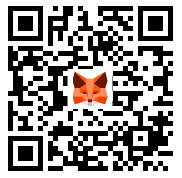Positive Reviews: AI Applications Deeply Penetrate Universities, Empowering Academic Efficiency and Ecological Innovation
With the arrival of the new semester in universities, the active performance of AI applications such as Quark, Baidu Academic, and Doubao on campus reflects the deep – integration trend of generative AI and higher education scenarios. This phenomenon not only meets the urgent needs of teachers and students for efficient tools but also promotes the innovation of the education technology ecosystem through differentiated product strategies. Its positive significance is mainly reflected in the following three aspects.
I. Accurately Solve Academic Pain Points and Significantly Improve Learning and Research Efficiency
According to the research data of MyCOS in 2024, more than half of university teachers and students have frequently used generative AI. Behind this high penetration rate is the precise empowerment of AI tools in academic scenarios. For example, undergraduate students use AI to generate images to complete graphic design assignments, postgraduate students use AI to translate and organize foreign literature, and doctoral students use the “thesis map” to quickly locate classic literature and sort out research contexts – these functions directly solve the inefficient links in the traditional academic process. Taking Baidu Academic as an example, its function of supporting batch uploading of 100 files and generating structured summaries in 30 seconds liberates students from the mechanical labor of “reading literature page by page” and allows them to devote more energy to analysis and innovation; Quark’s AI writing and AI PPT tools reduce the interference of non – professional skills (such as typesetting and design) on academic output. The popularization of these tools essentially transforms the “information processing ability” of AI into the “time dividend” for users, providing more efficient “infrastructure” for the academic exploration of university teachers and students.
II. Differentiated Strategies Activate Market Vitality and Promote the Diversification of the Education Technology Ecosystem
The differences in the expansion ideas of different AI applications in the university market are precisely the signs of a mature market. As an emerging AI search brand, Quark chooses the dual – wheel drive of “learning scenarios + life scenarios”: while meeting the core needs such as thesis writing and data organization, it encourages users to share their AI usage experience through community products and extends to life scenarios such as scenic spot explanations and daily graphic generation. Its goal is to enhance user stickiness through “high – frequency use” and expand market awareness. Data shows that Quark App topped the AI application list with 154 million monthly active users in August, proving that this strategy has achieved initial success. Baidu Academic, relying on the full – link capabilities of Baidu Wenku and Baidu Netdisk in “finding – viewing – using – sharing – creating – storing – managing”, chooses to deeply cultivate the vertical academic scenario: through functions such as high – quality literature resource docking, AI translation, and layout restoration, it strengthens the professional attributes of the “academic tool”. The high user scale of Baidu Netdisk (153 million monthly active users) and Baidu Wenku (132 million monthly active users) in August confirms the market potential of in – depth academic needs. Doubao takes a different approach and provides training and practice systems for AI programming enthusiasts. Although the covered group is relatively narrow, it binds high – potential users through the obvious value of “skill improvement” and sows the seeds for the future AI developer ecosystem. This competitive pattern of “each with its own focus” avoids homogeneous involution and instead promotes the education technology to evolve in a more segmented and professional direction.
III. Cultivating User Stickiness in Universities Lays the Foundation for the Long – term Market
The particularity of the university group lies in its “high growth potential” – once students form the usage habits of tools during their years from undergraduate to postgraduate studies, these habits may continue into the workplace and even for a lifetime. Quark has observed that college students use AI tools to query scenic spot information and generate daily graphics during the winter and summer vacations, which is a typical manifestation of this “learning – life” scenario migration. When students transform their use of AI applications from an “academic necessity” to a “life habit”, their lifetime value (LTV) will far exceed short – term traffic acquisition. More importantly, as “knowledge disseminators”, university teachers and students’ recognition of AI tools will radiate outward through teaching, social and other scenarios: teachers recommend tools in class, and students share their experiences with junior students. The dissemination efficiency of this “word – of – mouth fission” is much higher than that of commercial advertisements. Therefore, the competition in the university market is essentially a competition for “the minds of future users”. Whoever can establish user trust and usage habits at the university stage may gain an advantage in the long – term competition of AI applications.
Negative Reviews: Hidden Concerns and Challenges under the Craze of AI Applications in Universities
Although the penetration of AI applications in universities has brought significant value, the potential problems exposed in its rapid expansion also need to be vigilant. From academic ability cultivation to data security, from market competition to user dependence, multiple risks may affect the healthy development of education technology.
I. Excessive Tool Dependence May Weaken Core Academic Abilities
The high efficiency of AI tools is quietly changing the “academic production mode” in universities. For example, AI image generation may make students ignore the training of basic design skills, and AI writing tools may lead to the homogenization of thesis content and even hide the risk of “academic misconduct”. Although the “thesis map” mentioned by a doctoral student at Tsinghua University can quickly locate literature, excessive dependence on the recommendation function may make students lose the critical thinking training of “independently exploring the literature context”. More notably, some students regard AI as an “answer generator” rather than an “auxiliary tool” – an undergraduate student said bluntly that “AI image generation is used first for homework”. If this “tool – first” thinking becomes solidified, it may lead to the “degeneration” of academic innovation ability. The essence of education is to cultivate the ability of independent thinking and problem – solving. If AI tools change from “auxiliary” to “substitute”, it will go against the original intention of technology empowering education.
II. Data Security and Privacy Risks Urgently Need to be Regulated
The academic data of university users (such as thesis drafts, experimental records, and foreign literature) often contains sensitive information, and some research even involves scientific research secrets. When AI applications process such data, if there is a lack of strict privacy protection mechanisms, it may lead to data leakage or abuse. For example, Quark’s community product encourages users to share their AI usage experience. If users upload un – desensitized thesis fragments or experimental data, they may be obtained by third parties; Baidu Academic’s literature processing function requires uploading a large number of files, and the security of its cloud storage is directly related to user privacy. At present, although the privacy policies of most AI applications mention “data encryption”, the specific implementation details (such as data storage location, access rights, and the scope of third – party sharing) are still opaque. As a knowledge – intensive place, the data security of universities not only concerns individual rights and interests but may also affect national scientific research security. Relevant regulations and supervision must keep up.
III. Market Competition May Lead to Resource Mismatch and User Burden
The competition of current AI applications in universities has reached a “white – hot” stage: the promotion information on campus forums and bulletin boards is dense, and there is also a tendency of “innovating for the sake of innovation” in function development. For example, Quark’s community product tries to integrate more scenarios, but do users really need an AI tool that integrates “learning + life”? Does Baidu Academic’s emphasis on “full – link” capabilities reduce the user experience of core academic tools due to redundant functions? Although Doubao’s developer training targets a segmented group, is its input – output ratio sustainable? In addition, some students report that the overlapping functions of different AI applications (such as AI image generation and AI writing) lead to an increase in the “tool selection cost” – to complete a task, they may need to switch between multiple apps, which actually reduces efficiency. If market competition evolves into “function stacking” and “traffic competition”, it will not only waste R & D resources but also may put users in a dilemma of “tool overload”.
Suggestions for Entrepreneurs: Find a Balance between Efficiency and Value
The craze of AI applications competing for the university market provides important inspiration for entrepreneurs. Combining the current trends and potential problems, the following suggestions can be used as a reference:
I. Clearly Define the Hierarchy of User Needs and Avoid “Innovating for the Sake of Innovation”
The needs of university users vary significantly: undergraduate students are more concerned about homework efficiency, postgraduate students need in – depth literature processing, doctoral students focus on sorting out research contexts, and developers pursue skill improvement. Entrepreneurs need to accurately locate the target group through research (such as the user behavior data of MyCOS) to avoid resource dispersion caused by “all – inclusive” functions. For example, for undergraduate students, “light – weight tools” (such as AI image generation and quick typesetting) can be strengthened; for postgraduate students, “literature analysis” (such as cross – language comparison and citation network visualization) can be optimized; for developers, a “practice platform” (such as open – source project collaboration and model fine – tuning tools) needs to be provided.
II. Strengthen the “Tool – Assisted” Positioning and Design “Ability – Guiding” Functions
To avoid users’ excessive dependence on AI, the product design needs to incorporate the logic of “ability cultivation”. For example, AI writing tools can add a “step – by – step guidance” module (such as prompting users to sort out an outline first and then generate content), AI image generation tools can open the “parameter adjustment” function (to let users understand the generation logic), and the thesis map tool can set a “manual exploration” mode (to encourage users to independently explore literature associations). Through the closed – loop design of “tool use – knowledge input – ability output”, AI can become a “learning partner” rather than a “substitute for answers”.
III. Establish “Transparent Trust” in Data Security and Build a Compliance Moat
University users are extremely sensitive to data security. Entrepreneurs need to actively disclose the data processing process (such as encryption algorithms, storage locations, and access rights) and enhance trust through third – party certification (such as the ISO 27001 information security management system). In addition, a “local mode” can be developed for university scenarios (such as literature processing tools supporting offline operation) to reduce the risk of cloud transmission of sensitive data. Data security is not a “cost item” but a “moat” for building long – term competitiveness.
IV. Pay Attention to the User Lifecycle and Extend from the University to the Professional Scenario
The “growth potential” of university users is their greatest value. Entrepreneurs can plan in advance for the connection functions between the “university – workplace”: for example, providing AI tools for graduates to convert their theses into workplace reports and offering “quick – start services for industry literature” for new employees in the workplace, so as to extend the usage habits formed at the university stage to the professional scenario. This “full – cycle companionship” strategy can not only enhance user stickiness but also expand the commercialization space (such as paid functions in the workplace scenario).
Conclusion: The integration of AI applications and universities is essentially a two – way empowerment of technology and education. When the tool efficiency and academic value, market competition and user needs, technological innovation and security compliance are balanced, this “battle for AI in universities” can truly promote education technology to a more profound future.
- Startup Commentary”Building LLMs: The Knowledge Graph Foundation Every AI Project Needs”
- Startup Commentary”The 17th Year of Tmall Double 11 and the New Map Rewritten by AI”
- Startup Commentary”How to Prepare Your Data for Artificial Intelligence”
- Startup Commentary”Small and Medium-sized Banks: “Cutting the Tail” in Loan Assistance”
- Startup Commentary”The Six AI Giants on Stage: AGI Is No Longer a “Future” Thing”





